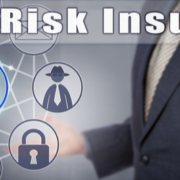7 things your business continuity plan should include
With business continuity, your business is prepared to keep running, no matter what type of disruption it faces. Natural disaster, hardware failure, a malware attack – with an effective plan, your company will have all the IT infrastructure, security, and operational tools in place to maintain productivity, communications, and compliance. Here’s a look at why business continuity planning is so important and what you should include in your plan.
Why business continuity matters
Business disruption can trigger serious problems that can be difficult to rebound from:
- Loss of productivity
- Increase in customer complaints
- Reputation damage
- Negative impact on staff
- Loss of revenue
A disruptive event can also be the first step toward business failure. The longer it takes for your teams to get back to business, the higher the risk of failure.
- 93 percent of organizations that suffered a data center outage of 10 days or more filed for bankruptcy that same year.
- Ransomware attacks cause an average of 16.2 days of downtime.
- Downtime costs between $10k and $5M per hour, and only 2 percent of businesses recover in less than an hour.
Business continuity enables teams to function, protecting your business from the unexpected.
Checklist for an airtight plan for your business
Here are the essentials every business should include in their disaster recovery plan.
1. Key contacts
Designate two or three employees from every department to be key contacts. These are the people everyone in the department should contact for direction and guidance in the event of a disaster. Your key contacts are also the individuals who know precisely how your business continuity plan works and what needs to happen to facilitate a fast recovery.
2. Communication guidelines
What communications solutions does your business have in place that work both in the office and remotely? As part of your business continuity plan, clarify what tools employees can use and what communication pathways need to happen to ensure everyone knows what is going on, how to continue operations, and when the situation has been resolved.
3. Threat analysis
Threat analysis is the process of understanding your company’s critical assets, vulnerabilities, and unique threat environment. It also includes developing strategies to mitigate every potential risk.
4. Suppliers and merchants
Who is responsible for communicating with vendors, suppliers, or other partners? You may want to have your key contacts do this or other individuals. Someone should have contact info for suppliers, merchants, and any other third-parties necessary to continue operations and a plan for contacting them, resolving challenges, and moving forward despite the disruption.
5. Recovery phases
Business continuity is a process. Your business should have a plan in place for every phase of recovery. Your recovery phases should include:
- Mitigation – immediate steps to lessen the impact when an incident happens
- Response – next steps beyond mitigation to address safety, prevent damage, and ensure everyone has the tools and knowledge they need
- Recovery – steps to continue core operations, for example, working remotely with cloud-based tools
- Restoration – the process of returning to the new normal after the event and analyzing what can be learned from the experience
6. Disaster planning
Your continuity plan will also include measures to enable your business to recover from a disaster, such as automatic on-site and off-site backups, redundancy, and other data recovery solutions.
7. Have a printed copy handy
If you have a disaster and don’t have access to critical infrastructure, you’ll want a hard copy available to follow.
How to ensure disaster doesn’t stop your business
A holistic approach to business continuity can ensure your company survives any type of disaster – whether it’s a global crisis, a regional natural disaster, or an incident that impacts your business alone. The problem is, a lot of companies don’t have the in-house expertise necessary for crafting a comprehensive plan.
Bring all the pieces together with the help of a managed services provider specializing in business continuity and disaster recovery. Benefit from a plan that’s built to help your business cope with anything. Contact KME today.












